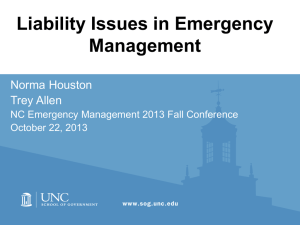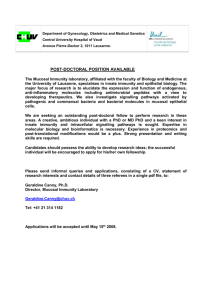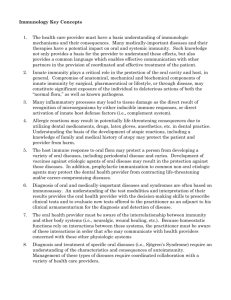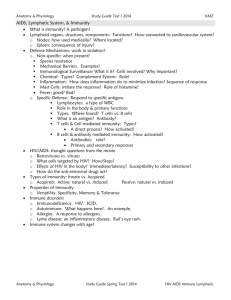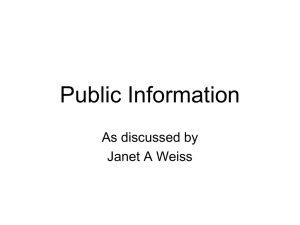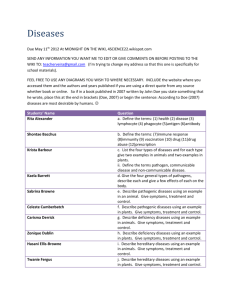GOVERNMENTAL IMMUNITY DEFINITION
advertisement
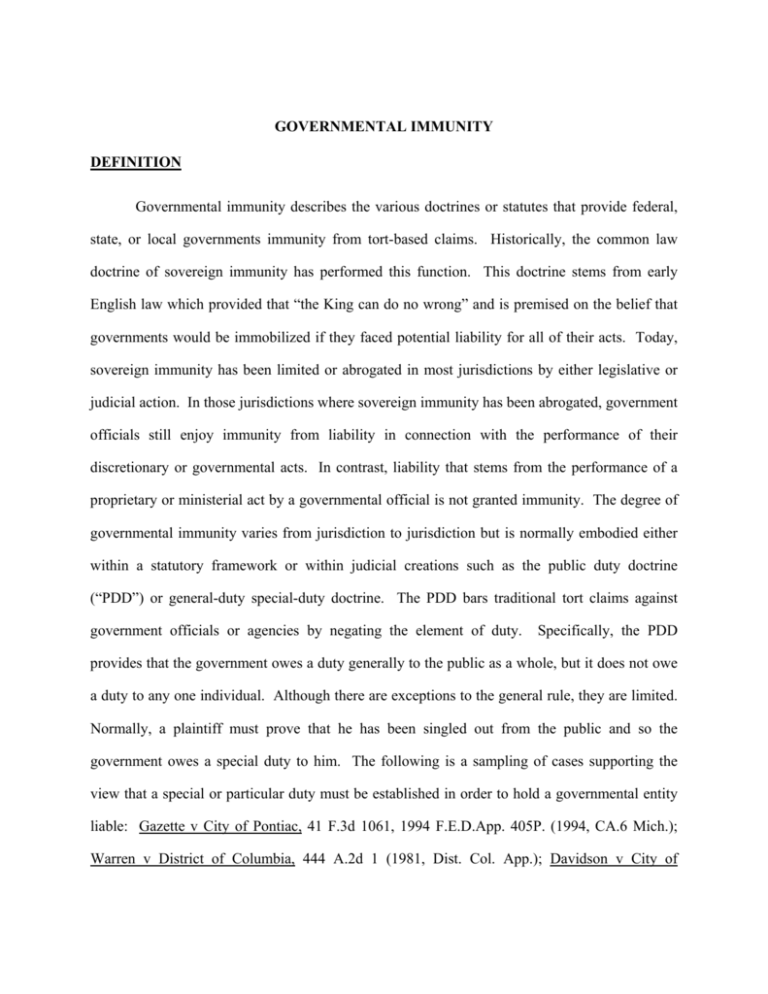
GOVERNMENTAL IMMUNITY DEFINITION Governmental immunity describes the various doctrines or statutes that provide federal, state, or local governments immunity from tort-based claims. Historically, the common law doctrine of sovereign immunity has performed this function. This doctrine stems from early English law which provided that “the King can do no wrong” and is premised on the belief that governments would be immobilized if they faced potential liability for all of their acts. Today, sovereign immunity has been limited or abrogated in most jurisdictions by either legislative or judicial action. In those jurisdictions where sovereign immunity has been abrogated, government officials still enjoy immunity from liability in connection with the performance of their discretionary or governmental acts. In contrast, liability that stems from the performance of a proprietary or ministerial act by a governmental official is not granted immunity. The degree of governmental immunity varies from jurisdiction to jurisdiction but is normally embodied either within a statutory framework or within judicial creations such as the public duty doctrine (“PDD”) or general-duty special-duty doctrine. The PDD bars traditional tort claims against government officials or agencies by negating the element of duty. Specifically, the PDD provides that the government owes a duty generally to the public as a whole, but it does not owe a duty to any one individual. Although there are exceptions to the general rule, they are limited. Normally, a plaintiff must prove that he has been singled out from the public and so the government owes a special duty to him. The following is a sampling of cases supporting the view that a special or particular duty must be established in order to hold a governmental entity liable: Gazette v City of Pontiac, 41 F.3d 1061, 1994 F.E.D.App. 405P. (1994, CA.6 Mich.); Warren v District of Columbia, 444 A.2d 1 (1981, Dist. Col. App.); Davidson v City of Memorandum June 6, 2002 Page 2 Westminster, 32 Cal.3d 197, 185 Cal.Rptr. 252, 649 P.2d 894 (1982); Biloon’s Electrical Service, Inc. v Wilmington, 401 A.2d 636, affd on other grounds (Del. Sup.) 417 A.2d 371 (1979, Del. Super.); Florence v Goldberg, 44 N.Y.2d 189, 404 N.Y.S.2d 583, 375 N.E.2d 763 (1978); Chapman v Philadelphia, 290 Pa. Super. 281, 434 A.2d 753 (1981). Note that other states, such as Pennsylvania, have enacted legislation precluding subrogation claims against governmental agencies entirely. In addition to immunity issues, claims against governments are often subject to time sensitive notice requirements. Notice requirements for tort actions against the federal government are set out in 28 U.S.C. § 2401 of the Federal Tort Claims Act. That statute bars tort claims against the United States if they are not presented, in writing, to the appropriate federal agency within two years after the claim accrues. Assuming the federal agency then properly denies your claim in writing, suit must be initiated within six months or it is forever barred. Finally, some jurisdictions have enacted liability caps that severely limit the amount of damages that can be recovered from their governmental agencies. For example, Oregon Revised Statute 30.270(a) caps a governmental agency’s liability for property damage at $50,000 per claimant per occurrence. For obvious reasons, statutes limiting damages must be considered when deciding whether a particular claim against the government is cost effective to pursue. TYPICAL FACT SITUATION Governmental immunity, notice requirements, and liability caps can arise in any case where the tort-feasor is a governmental or quasi-governmental employee or entity. In some states, public utilities are categorized as municipalities and considered government bodies. Additionally, sometimes non-governmental employees, such as volunteer firefighters, are treated Memorandum June 6, 2002 Page 3 as governmental employees for purposes of immunity. Much of the case law on this topic involves personal injury/wrongful death actions against law enforcement agencies for failure to provide adequate police protection. These issues commonly arise in subrogation cases when the actions of the responding fire department are called into question or when actions by building officials or governmental maintenance personnel are thought to have caused or contributed to a loss. PRACTICE TIPS A memorandum of law addressing subrogation claims against governmental entities is located at Document Seattle 1/331213/1 099995.000 in the Seattle Library. Once you have identified a negligent party that potentially could be considered a governmental entity, immediately check the appropriate statutes and determine whether notice requirements will come into play. Contacting the target governmental agency’s risk management personnel is wise as they will often provide notice forms and contact information that can be utilized. Always, however, check such information against the applicable statutes and note any time constraints that may operate to bar your claim. Also note what information your notice must contain, where the notice must be sent, and the manner in which it must be sent (e.g. – certified mail). Next, determine whether immunity issues will come into play. Identify whether the tort feasor is within the protected class and determine what action subjects the tort feasor to liability. Typically, the government is not provided immunity from the performance of proprietary or ministerial acts. Thus, a government actor who commits a tort while employed by a for-profit government business would not be granted immunity. Similarly, immunity would not normally be extended to a building official who failed to perform a non-discretionary safety check. Memorandum June 6, 2002 Page 4 Finally, determine whether liability caps apply and, if so, what impact they will have on your claim. PHILA1\1963083\1 099995.000

